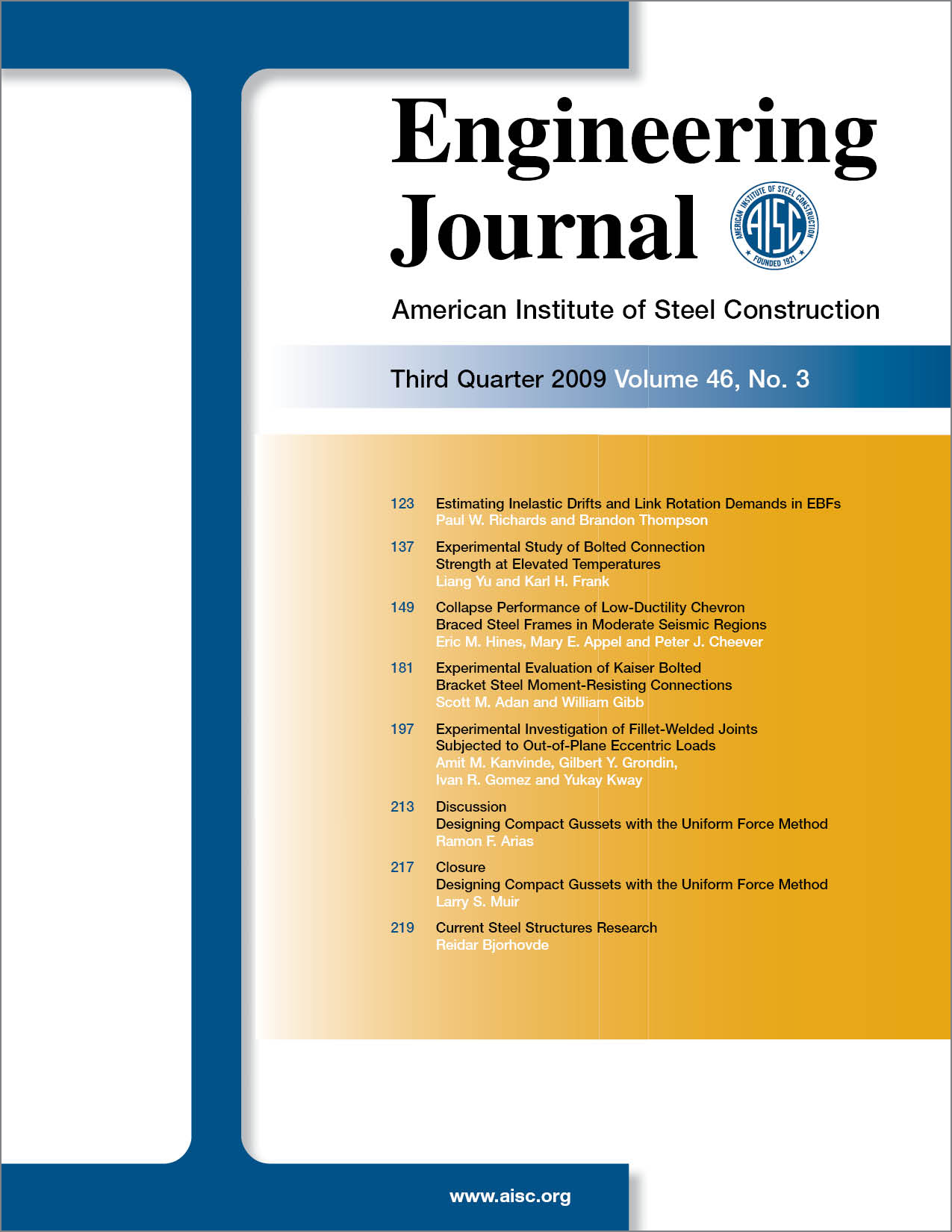Experimental Investigation of Fillet-Welded Joints Subjected to Out-of-Plane Eccentric Loads
DOI:
https://doi.org/10.62913/engj.v46i3.955Keywords:
welds, analysisAbstract
The current AISC design specification for welded connections does not make a distinction between joints subjected to eccentric loads in the plane of the weld group, and those subjected to eccentric loads not in the plane of the weld group. To address this issue, results from 60 tests on cruciform joint specimens are presented to examine the effect of combined shear and out-of-plane bending on the strength of fillet welded joints. All specimens are loaded in a three point bending configuration, such that the out-of-plane bending is resisted through a combination of tensile weld stresses and compressive bearing stresses between the connected plates. Two welding filler metals (flux-cored wires, toughness rated E70T7-K2 and non-toughness rated E70T-7), two nominal weld sizes (5/16 inch and 1/2 inch), three nominal load eccentricity ratios (0.75, 1.375 and 2.125) and three plate bearing widths (1.25 inch, 1.75 inch and 2.5 inch) are investigated. Analysis of the test data, in addition to similar data available in the literature, reveals that the current (13th Edition Steel Construction Manual) AISC design tables for eccentrically loaded welds are highly conservative (i.e. test-to-predicted load ratios are, on average, 1.75; with a coefficient of variation = 0.25) for joints with out-of-plane eccentricity. This conservatism is attributed to the disregard of plate bearing stresses that significantly alter the stress distribution in the joint. An alternate approach that explicitly incorporates this bearing effect is proposed, and the resulting strength predictions are determined to be significantly less conservative when compared to the current design standards. Limitations of the research and future work are outlined.

